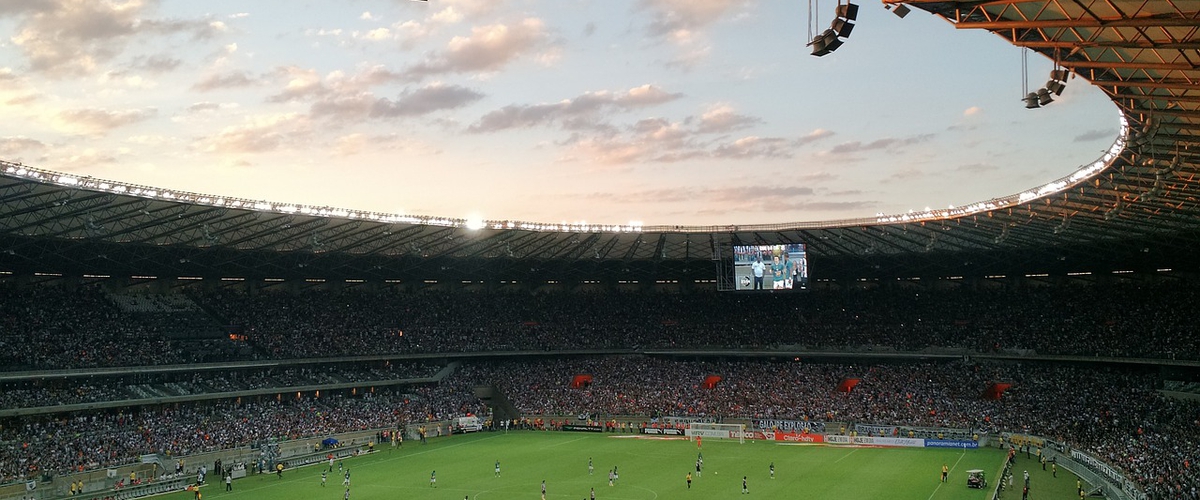6 Innovative Football Stadium Technology

It is hard to impress a modern sports fan, especially in a sport as widely popular as football. This is also true when it comes to stadium innovations as fans have seen it all and have high standards when it comes to being truly impressed with what they experience at a football stadium on game day.
However, club owners are constantly trying to attract new fans with novelties that are mostly based on modern technologies. These improvements are concerned with the offline experience of a football match, as well as online gizmos and apps that make it easier to support your local club and take an active part in its road to success. Here are the top 6 innovative technologies that will make your next trip to the stands of your favorite club memorable.
Self-service stations and ticket offices
If there is a big game coming up, no fan is going to risk losing his or her place in the stands because of the inability to purchase a ticket online. They prefer to head to the stadium itself and purchase the tickets there, at the source. However, the present ticketing systems are largely inadequate because they are operated by the club’s staff, i.e. people.
In order to cut down on ticket costs, clubs are introducing self-service ticket offices that ease the process of buying a ticket for the big game. Since they are unmanned, you can have as many of them as you like with minimum maintenance costs. This concept has seen an expansion in the food and drinks industry as well since there are more and more vending machines popping up at stadiums worldwide.
A personal replay

Although football franchises swear by high-tech devices, the fact remains that they are hard to implement in some cases. Although the Russian Premier League side Zenit has the largest LCD screen on a football venue in the world, clubs would like to have more personalized screens.
The idea that every seat in the stadium should have a small LCD screen built inside it has been around for a long time. However, the total cost of such a system has been stopping clubs from implementing it so far. As the technology becomes cheaper to install, we could see such a screen appear by the end of the decade, as there is nothing more personal than watching a replay on the screen right in front of you.
Improved access control
Another place in the stadium where modern information technology could be applied are gates. When tens of thousands of fans rush into the stadium on game day, it is hard for the officials to keep track of every single entry, as the number of people needed to control the flow of fans is overwhelming.
That is why smart gates that use biometric validation or RFID technology are the right way to go. Like interactive kiosks, they would decrease the operational costs and ensure that each fan with a valid ticket enters the stadium. Such tourniquets would also add to stadium security as people without a validly purchased ticket would not be able to sneak their way inside.
LED lighting
Since a large number of games is played at night, stadiums must be equipped with state of the art lighting system, This is not only important for the fans who don’t want to miss any major but for players as well, as they can really appreciate being able to see as if it were daytime. This is where LED sport floodlighting comes into play, pun intended.
It is much better than the way stadiums were lit just two decades ago, using incandescent floodlights. LEDs use up to 40% less power to operate and are fairly easy to maintain. As far as the fans are concerned, they can expect LED light to turn instantly on in case of midgame power outages which still occur, even in developed countries.
Better bandwidth
Free public Wi-Fi networks are nothing new on football venues but once thousands of fans try to connect during halftime, for example, the connection becomes poor. However, fans are in luck because Wi-Fi routers found at stadiums are constantly being developed to the point that the will be able to facilitate an Internet connection for every single smartphone on the stadium.
Better bandwidth is an innovation in itself but it sure matters to a fan who wishes to share the success of his or her club on Instagram. In addition, all of the equipment we have listed above such as smart gates and self-serving ticket offices is counting on excellent Wi-Fi signal to function properly.
Cameras made for filming football matches
As far as the fans at home are concerned, they are relying on the cameras at the stadium to provide them with the best-quality image. Although there are cameras that are produced with the intention of recording sports, football cameras are a real innovation.
These cameras have the ability to record, edit, and stream in real-time football matches, even when it comes to lower league clubs. AI-powered detectors built into them independently track both the ball and the players, providing the audience back home with the best possible image.
Most of the 6 technologies listed above are already being applied but we will see their proliferation in the years to come. The ultimate goal is to improve the stadium experience for the fans.